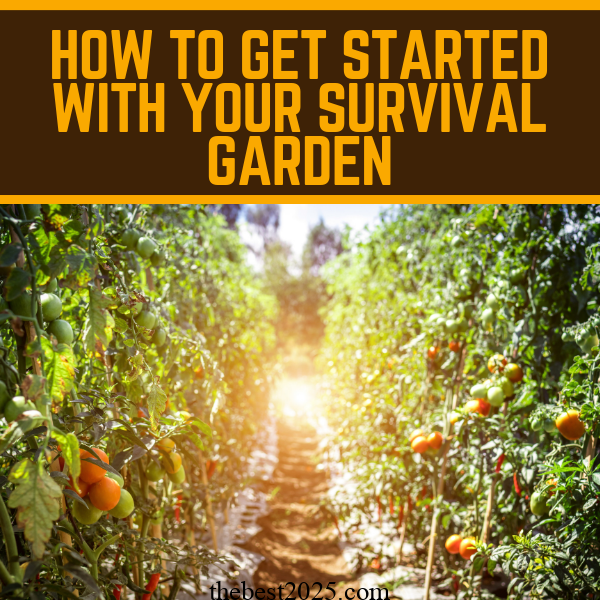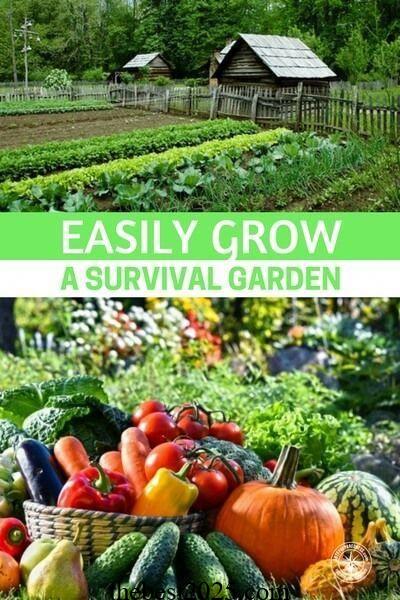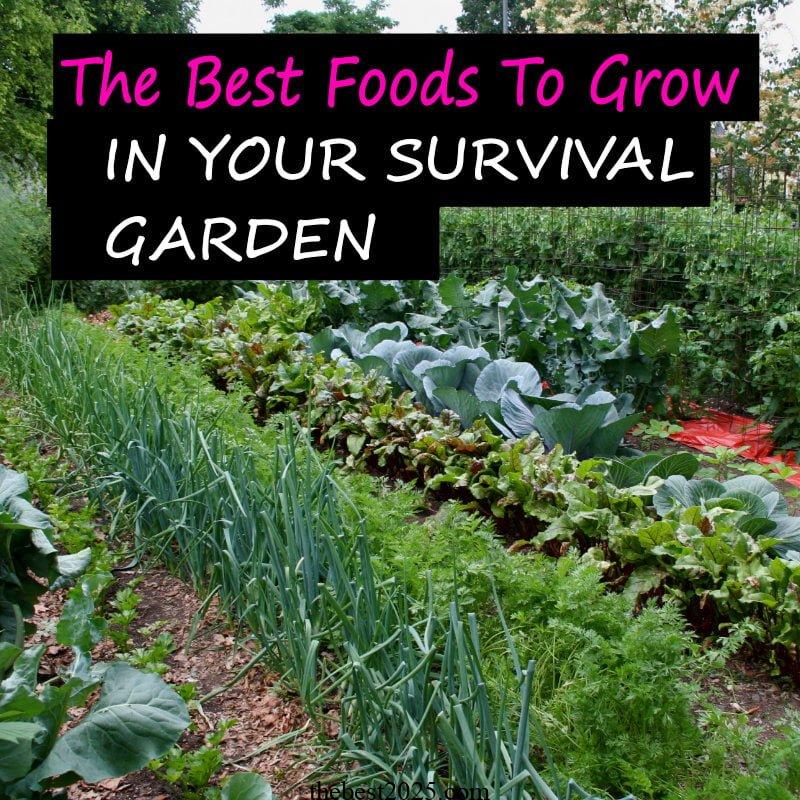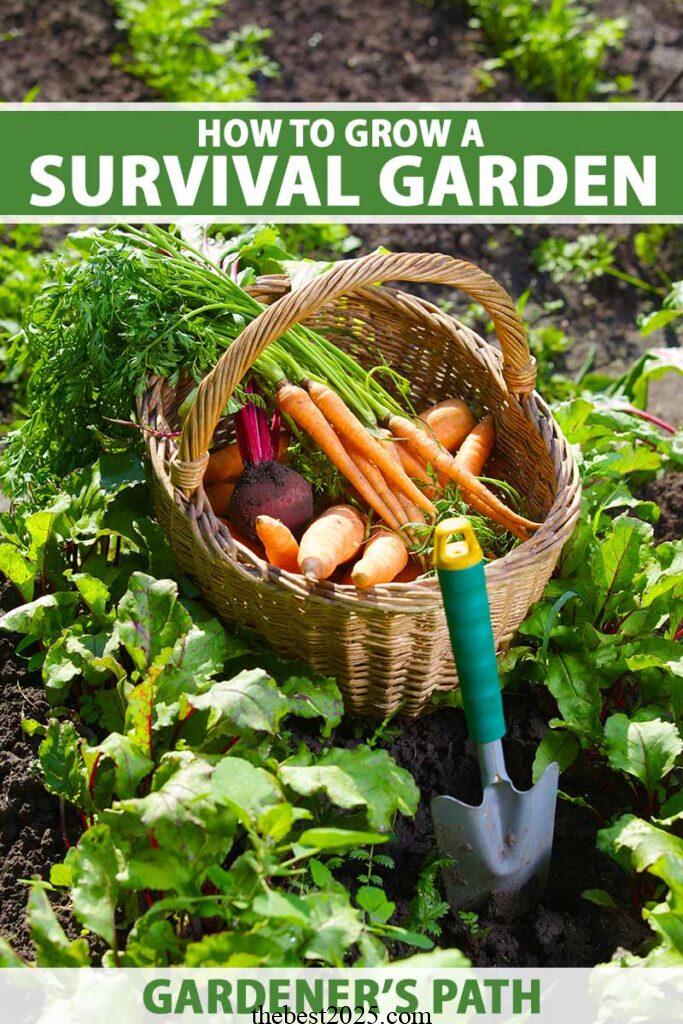What Is a Survival Garden? Tips to Grow Your
Own
In today’s world, the concept of a survival garden
has gained significant importance. As the uncertainties of life continue to
unfold, it’s crucial to explore ways to become more self-reliant and
sustainable. A survival garden is a powerful tool that can help you achieve
just that. In this comprehensive guide, we’ll delve into the intricacies of
what a survival garden is and provide you with valuable tips to grow your
own.
Understanding the Survival
Garden

A survival garden is a
dedicated space where you cultivate essential crops and plants to ensure your
food security during challenging times. It’s not just about growing a few
tomatoes in your backyard; it’s a deliberate and strategic approach to sustain
yourself and your family in times of need. Let’s explore the key aspects of a
survival garden:
Crop Selection
Choosing the
right crops for your survival garden is paramount. Opt for plants that are
easy to grow, high in nutritional value, and have a longer shelf life. Some
ideal choices include:
- Potatoes:
Potatoes are versatile, easy to grow, and a great source of
carbohydrates. - Beans: They are rich in protein
and can be canned or dried for long-term
storage. - Corn: A staple crop that’s not only
delicious but can also be dried and ground into
cornmeal. - Root Vegetables: Carrots, turnips,
and beets are nutritious and store well. - Herbs:
Herbs like basil, oregano, and thyme can add flavor to your meals and even be
dried for future use.
Garden
Location
Selecting the right location for your survival garden
is vital. Ensure that it receives an adequate amount of sunlight and has good
drainage. Consider raised beds to improve drainage and make maintenance
easier.
Water Management
Water is a precious
resource, so it’s essential to have a reliable watering system in place. Rain
barrels, drip irrigation, or a well-designed watering schedule can help
conserve water and keep your garden thriving.
Pest
Control
To protect your crops from pests, consider natural and
organic pest control methods. Companion planting, beneficial insects, and
organic sprays can all play a role in keeping your garden
healthy.
Tips for Growing Your Own Survival
Garden

Now that we have a
better understanding of what a survival garden is, let’s dive into some
practical tips to help you get started on your journey to self-
sufficiency.
Start Small
If you’re new to
gardening, it’s wise to start small. Learn the basics, and as you gain
experience, you can expand your garden. Starting small allows you to focus on
a few key crops and get comfortable with the process.
Soil
Preparation
The foundation of a successful garden is healthy
soil. Invest time in preparing your soil by adding compost and other organic
matter. Well-prepared soil will provide essential nutrients to your
crops.
Crop Rotation
Crop rotation is a smart
practice to prevent soil depletion and control pests and diseases. Plan your
garden layout with crop rotation in mind to maintain long-term soil
health.
Learn Preservation Techniques
In a
survival garden, it’s not just about growing; it’s about preserving. Learn
techniques such as canning, drying, and pickling to extend the shelf life of
your harvest.
Embrace Permaculture
Permaculture
principles focus on sustainable and regenerative agriculture. Explore
permaculture techniques to make your survival garden even more resilient and
productive.
Store and Manage Seeds
Having a
stockpile of seeds is essential. Ensure that you store them in a cool, dry
place to maintain their viability. Additionally, keep records of the types of
seeds and their planting dates.
FAQ: Common Questions About
Survival Gardens

Q: How
big should my survival garden be? A: The size of your survival garden
can vary depending on your available space and needs. Start small, and as you
gain experience, you can expand it to meet your
requirements.
Q: Can I grow a survival garden in a
small backyard? A: Absolutely! Survival gardens can be tailored to fit
small spaces. Vertical gardening, container gardening, and raised beds are
great options for limited areas.
Q: How do I protect my
survival garden from wildlife and pests? A: Consider using fencing,
netting, and organic pest control methods to protect your garden. Companion
planting can also help deter pests.
Q: What are the
best crops for long-term storage? A: Potatoes, beans, corn, and root
vegetables are excellent choices for long-term storage. Properly preserved,
they can last for months or even years.
Q: Is it
necessary to learn canning and food preservation techniques for a survival
garden? A: Yes, it’s highly recommended. Learning these techniques
will help you make the most of your harvest and ensure you have food available
in times of
need.
Conclusion

A
survival garden is more than just a hobby; it’s a practical step towards self-
sufficiency and resilience. By carefully selecting your crops, maintaining
your garden, and learning preservation techniques, you can create a reliable
source of fresh produce that will serve you well in challenging times. Whether
you have a large backyard or a small balcony, there’s always room to start
your own survival garden. So, roll up your sleeves, get your hands dirty, and
embark on this rewarding journey to grow your own
food.
tag
- chicken feed
- how to Keep
Chickens Off Your Porch - How to grow oyster mushrooms
at home - Growing Kale in Pots


0 Comments